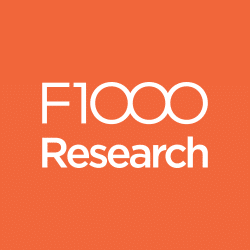| Differences | Gold open access | Green open access |
|---|---|---|
| What is the access? | The final published version of your article (or Version of Record) is permanently and freely available online for anyone, anywhere to read. | Also known as self-archiving, when you post an earlier version of your manuscript in repositories and online. |
| What are the embargo periods? | Not usually required. | Usually required, unless publishing through an LIS journal. |
| What are the fees? | An article publishing charge (APC) is usually applicable if you publish gold OA. | You can share your article without having to pay an APC. |
| Who retains copyright? | You, the author, retain copyright. The agreement includes the Creative Commons license of your choice. This dictates what others can do with your article once it’s published | The copyright will usually sit with the publisher or affiliated society. Restrictions will apply to reuse. |
| What licensing should be used? | Publish under a license with few or no restrictions on how people can reuse your work. Of course, they must still credit you if they do so. | You will need to check with the publisher. For Taylor & Francis journals, please see our recommendation for the license to use when sharing your Accepted Manuscript. |
What are the gold and green open access publishing options?
At Taylor & Francis we offer choice in the route to publishing open access (OA). You can either choose to publish “gold” OA or make your article available via “green” OA options.
Use this page to get familiar with the differences between gold OA and green OA, and to understand how the different publishing options available work.
Gold OA means that the final published version of your article (or Version of Record) is permanently and freely available online for anyone, anywhere to read. An article publishing charge (APC) is usually applicable if you publish gold OA.
With gold open access you can:
Share your research anywhere you choose as soon as it’s published.
Comply with any funder mandates to publish OA.
Keep copyright of your work post-publication.
Publish under a license with few or no restrictions on how people can reuse your work. Of course, they must still credit you if they do so.

Green OA, also known as self-archiving, is when you post an earlier version of your manuscript in repositories and online. This enables you to share your article without having to pay an APC.
Authors publishing in any Taylor & Francis Group journal can take advantage of the green open access route. This includes depositing a version of your article in an institutional or subject repository, as well as posting it on your blog or social media profile.
Please note that an embargo period usually applies.

The table below shows some of the key differences between gold and green open access.
How open access works depends upon the individual journal’s guidelines and procedures. A general guide to the steps you might take when publishing gold open access is below.
Check your funder or institution’s policy on open access. They might have requirements around how you publish your work open access (i.e. what license you should publish under).
Choose the journal that is the best fit for your research. Help inform your decision by exploring the individual license, embargo, and article publishing charge information.
Check who will pay the article publishing charge (APC, also called “article processing charge”). The APC is a publication fee associated with making your article gold open access. This is often paid by the author’s institution or funder.
Write and submit your paper following journal guidelines. Make any comments as guided by peer review or editor comments.
If publishing in an Open Select journal, choose open access on acceptance and tell the publisher who will cover your APC.
Select your Creative Commons license so you can comply with funder mandates and control how others use your work.

Once published open access, your work will be available for anyone, anywhere to read, maximizing reach and impact.
Full open access options

Every new article in our Open journals is published gold OA. Some of these journals have always published exclusively open access articles, while others are part of our ongoing program of converting subscription journals to full OA.
The majority of these journals use Creative Commons licenses. Browse our growing list of Open journals.

Dove Press publishes primarily in the Health Sciences, with some content in Science and Technology. Since its foundation in 2003, Dove has built up a strong portfolio of high-quality, peer-reviewed open access journals.
Over 80 of the titles are indexed in Clarivate’s Web of Science and more than 60 in PubMed. Find out more on the Dove Press website.

F1000Research is an open research publishing platform for scientists, scholars and clinicians offering rapid publication of articles and other research outputs without editorial bias.
All articles benefit from transparent peer review and editorial guidance on making all source data openly available. You can find out more on the F1000Research website, and here are 6 reasons why F1000Research could be the perfect home for your research.
Hybrid open access options

Open Select gives you the option to make an article gold OA in one of our 2,300 subscription-based journals. This option is also known as “hybrid open access”.
This initiative currently covers most titles under the Routledge and Taylor & Francis imprints. It offers you a huge choice of subjects and disciplines, ranging across the sciences, social sciences, medicine, technology, engineering, humanities, and arts.
When you publish gold open access with Taylor & Francis we ask you to sign a publishing agreement. This gives us the right to publish the Version of Record of your article. You, the author, retain copyright. The agreement includes the Creative Commons license of your choice. This dictates what others can do with your article once it’s published. Please note, available licenses differ by journal – find out which licenses your chosen journal offers by using the open access cost finder.
Attribution (CC BY)
Others can distribute, remix, tweak, and build upon your work, even commercially, as long as they credit you for the original creation. We offer this license on the majority of our full Open and hybrid Open Select journals (when publishing on a gold OA basis). Most F1000Research articles are published CC BY and Dove Medical Press offers the CC BY license to authors whose articles are funded by the organizations listed on the Dove website.Attribution-NonCommercial (CC BY-NC)
Others can remix, tweak, and build upon your work non-commercially. Although their new works must also acknowledge you and be non-commercial, they don’t have to license their derivative works on the same terms. We offer this license on the majority of our full Open journals.Attribution-NonCommercial-NoDerivatives (CC BY-NC-ND)
Others can download your works and share them with others as long as they credit you, but they can’t change them in any way or use them commercially. We offer this license on our hybrid Open Select journals (when publishing on a gold OA basis), on Dove Medical Press journals, and some full Open titles.

Use the open access cost finder to check the current article publishing charge (APC) and open access (OA) options across all Taylor & Francis and Routledge journals.



